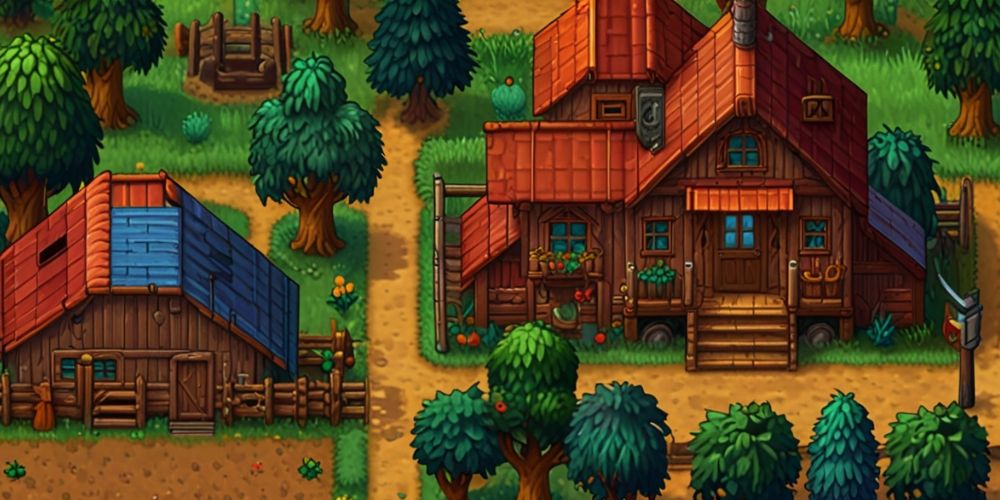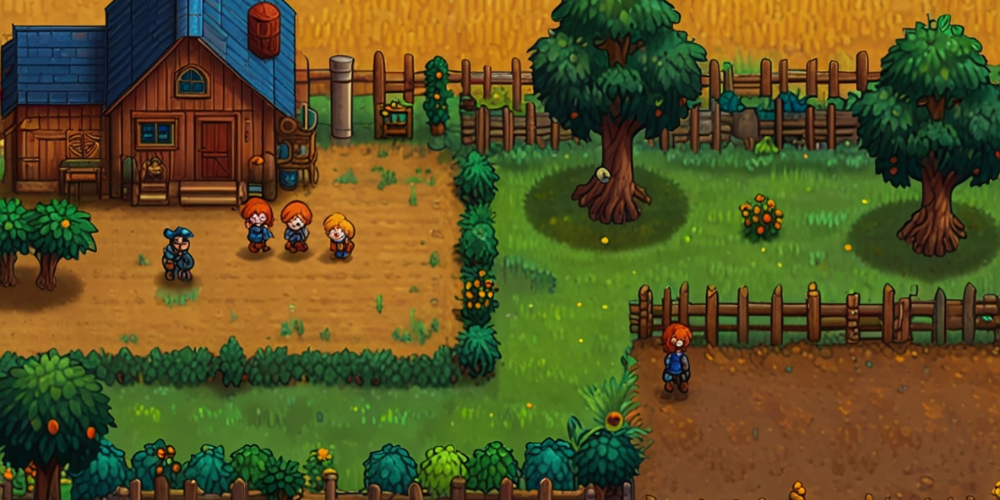
Stardew Valley is much more than just a farming simulator; it encapsulates the essence of rural life, offering players the opportunity to build a farm, foster relationships, and immerse themselves in a beautifully crafted world. Players can grow crops, raise animals, forage, and explore the local mines, but the core of the experience hinges on mastering farming techniques. Players can also significantly maximize efficiency and profit by delving into advanced farming strategies. This guide will explore numerous aspects of farming in Stardew Valley, ensuring that all players can cultivate a thriving agricultural empire.
Understanding Crop Growth Cycles
Each crop in Stardew Valley comes with its unique growth cycle. Learning the growth times and seasons is crucial for maximizing your yield. For instance, planting cauliflower in spring rather than summer allows for an earlier harvest. Familiarizing yourself with these details helps you plan crop rotations effectively. Keeping a calendar and utilizing the in-game notice board can assist in tracking which crops are due to be harvested or replanted, ensuring timely management of your farm.
Efficient Crop Layout Planning
When it comes to laying out your farm, a strategic design can significantly impact your productivity. Consider arranging crops in a grid pattern, allowing for easy access and watering. Placing sprinklers in the center of your crop fields maximizes water coverage and frees up time for other activities. Maintaining paths between crops can further enhance movement and organization, ensuring every part of your farm is manageable and crops receive the necessary attention.
Utilizing Sprinklers to Automate Watering

Sprinklers are invaluable tools for optimizing farming operations. While early-game players may rely on manual watering, investing resources into crafting sprinklers can massively save time. Basic sprinklers cover a 3x3 grid, while quality sprinklers expand the coverage to 5x5. Iridium sprinklers are the most efficient, with a range of 7x7. Strategically placing these allows you to cultivate larger plots with minimal effort, focusing on harvesting and other farm tasks.
Crop Selection for Profit Maximization
Not all crops are created equal. Understanding which crops yield the highest profits during specific seasons is fundamental in optimizing income. For example, starfruit and ancient fruit offer substantial profits, especially when grown in greenhouses. Experimenting with seasonal crops like blueberries and cranberries can also yield fantastic returns during their respective seasons. Consult guides and the in-game shipping menu to determine which options will boost your bottom line.
Crop Fertilization Techniques
Utilizing fertilizers can drastically enhance crop quality and yield. Basic fertilizers can improve growth rates, while higher-tier options increase the chances of producing quality crops. Experiment with speed-gro for faster growth or quality fertilizer for better-quality yields. Creating a compost bin can also provide a consistent supply of basic fertilizer from leftover crops or animal waste. This approach ultimately leads to improved productivity and profitability over time.
Utilizing Greenhouses for Year-Round Farming

The greenhouse represents a player’s ultimate farming goal, offering the ability to grow crops year-round regardless of the season. Once unlocked, invest in high-value crops. This space allows you to plant ancient fruit, which yields a profit each day. To maintain a successful greenhouse, pay attention to lighting and go for quality fertilizers to create ideal growing conditions. With proper management, the greenhouse can become an evergreen source of income.
Animal Husbandry for Additional Profit Streams
While crop farming is vital, raising livestock can also yield significant income. Diversifying your farm's income sources by incorporating animals can be profitable. Each animal provides valuable resources, such as milk, eggs, and wool. Investing in barns and coops can be costly initially, but over time, the ongoing production of artisan goods like cheese and mayonnaise provides substantial profit margins. Caring for animals also unlocks the potential for better quality products, further enhancing profitability.
Artisan Goods and Their Profit Potential
Transforming base resources into artisan goods is an excellent way to maximize profit margins. For example, turning milk into cheese or crops into various pickled items generates substantially higher revenue than selling raw ingredients. Create a layout for your artisan equipment that allows for easy access and flow between processing stations and storage. After unlocking the necessary recipes and equipment, you can diversify and expand your productions to cater to changing markets.
Seasonal Crop Rotation Strategies

Implementing a rotation system for seasonal crops helps maintain soil health and increases overall yield. By planting different types of crops in different seasons, players can prevent depletion of nutrients in the soil and combat potential pest issues. This cyclical planting method can lead to improved outcomes for future harvests. Utilize crop bundles in the Community Center to track which crops you’ve grown and to guide your planning for each season.
Building Infrastructure to Enhance Efficiency
Investing in infrastructure can streamline farm operations significantly. Building sheds and barns close to crop fields, as well as proximity to artisan equipment minimizes travel time. Additionally, consider constructing silos to store feed conveniently and provide easy access to livestock supplies. This infrastructure keeps your operation organized and reduces the time spent moving between different areas on the farm.
Weather Patterns and Their Impact on Farming
Understanding the impact of weather patterns on crop yields is crucial for advanced farming. Rain eliminates the need for watering, allowing you to focus on harvesting and other tasks. Pay attention to the daily TV weather forecast, which provides information about sunny, rainy, or stormy days. Planning around these forecasts ensures that you can optimize your farming tasks according to the most favorable weather conditions, improving overall efficiency.
Building Relationships for Farming Benefits

Relationship-building with the townsfolk in Stardew Valley isn’t only about social interactions; it can directly benefit farming activities. As relationships improve, players can receive gifts, recipes, and even items that enhance farm life. Furthermore, gifting crops or artisan goods to town members can greatly improve friendship levels. Some characters also offer unique benefits, like special discounts on produce or farming techniques, which can significantly aid your farming efforts.
Seasonal Festivals and Their Role in Farming Community
The seasonal festivals held in Stardew Valley are not just fun events; they can also provide practical benefits for farmers. Participating in contests and competitions can yield unique prizes that can enhance farming operations or increase productivity. Additionally, these events serve as a great opportunity to build relationships within the community while showcasing your farming prowess. Engage actively in these festivals to gain rewards and deepen your connection with the town's residents.
Adopting Sustainable Practices for Long-Term Success
Consider adopting sustainable practices on your farm to promote long-term success. This involves crop diversification, rotating crops, and employing organic farming techniques. Sustainable practices help maintain soil health and overall ecosystem balance in your farmland, helping you maximize crop yield and maintain productivity over larger time frames. The benefits of sustainability extend to both profit and land health, ensuring that your farm flourishes in harmony with the environment.
Leveraging Technology Through Mods and DLCs
The modding community surrounding Stardew Valley offers a plethora of enhancements to improve your farming experience. Various mods can help streamline product production, optimize farm layouts, and even automate resource gathering. While relying on mods can enhance gameplay, it’s essential to choose wisely and ensure they are compatible with the current version. Additionally, consider exploring downloadable content (DLC), as this can introduce new crops, animals, and farming methods, offering fresh opportunities to optimize your farm.